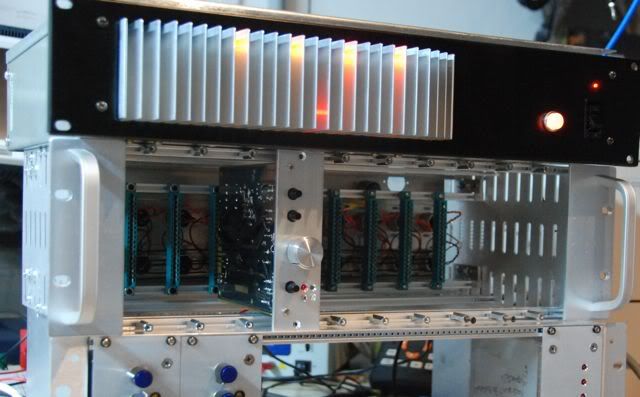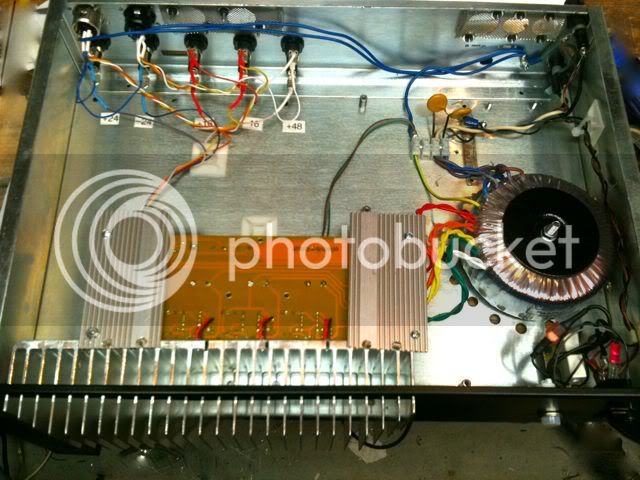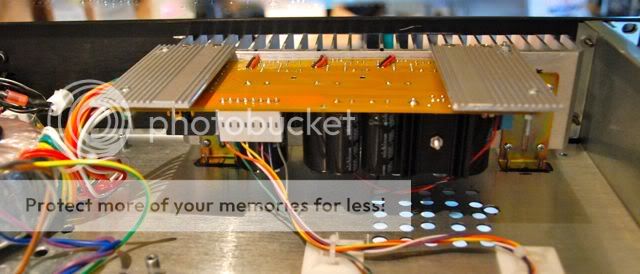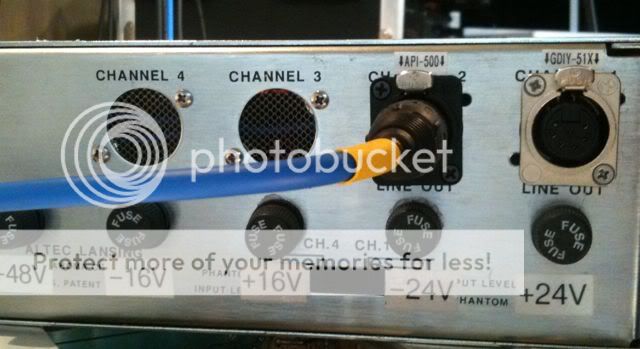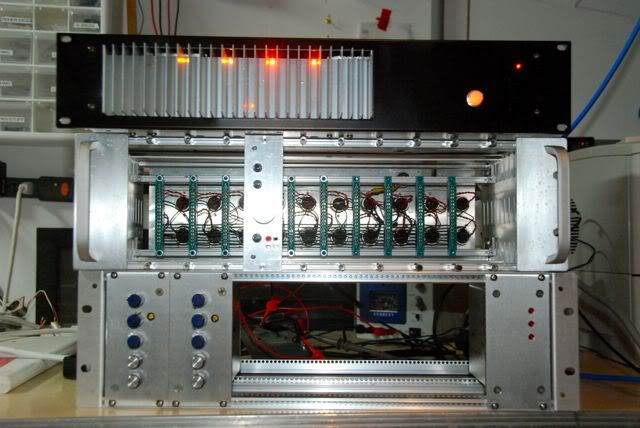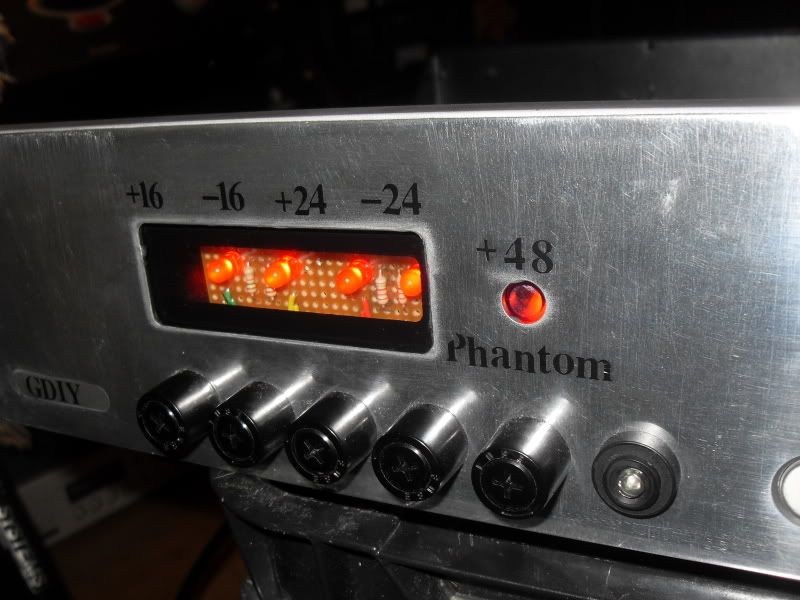i put together a GDIY51x PSU using one of the Silent arts board and ClassicAPI toroid. But no cases yet, so while I wait I ripped apart an old Altec Amplifier and an old Altec Preamp (that I had been harvesting Transformers from) and used the Heat sink from the Amp, and the case from the Preamp to make a nice little 2u 51x PSU.
Here are some pics
I think the exposed heatsink looks nice, but it is practical too. The heatsink protects the inside of the case from fingers getting in but leave a tremendous amount of opening into the case and because of gaps below and above the sink (I cut it much shorter than 2u) it creates a vent driven by convection. Which I was pleased with because it is quiet.
I made a mistake with the LED's (I am quite new to this electronic hobby) and so while it looks cool with the little LED's buried in the heatsink, the way I wired them they don't turn off when a fiuse blows. I want a blown fuse to turn of one of the LED's to show me which one blew. So I will have to update that, and that will run more wire around, which I would like to avoid. It looks nice, one light for each voltage, the red one is for 48v.
To get the heatsink arrangement to work, and be out front with the cool air (and good looks

) and to use the power entry that existed in the case, I had to turn the board upside down. I wanted isolation... and well.... Distance is nature's Mu Metal.
By turning the case upside down I was able to keep the AC wiring pretty short, and keep it away from the DC. And I tapped 4/40 holes in the back of the heatsink, sunk threaded rod into them and bolted the regulators right to the heatsink (with insulators of course).
Here is a view where you can see the vent under the heatsink for the 48V, and also the space under the large heatsink. I hope that when the sink gets warm it will move the air out of the case, if I cap the inside top of the sink, I think it may be more effective, but at this point I am only powering 3 or 4 preamps with it (till I get my new toys), so it is pretty much overkill. The little rack mount PSU you can see in the top picture actually powers my +24/-24/48 now with a wall wart.
This is the case back, I wired it for API standard power as well as for GDIY 51x Power. I used the XLR connectors and that West Marine cable that Chunger identified, which works nice. Not super flexible, but it bends and coils, and is fine for me. I put screens over the empty holes left over from the case's previous life.
I put the power on an oscilloscope and it is cleaner than what I was using, at least under some load. Unloaded it has some sort of hunting oscillation maybe because the current through the adjust pin is too low to keep it solidly regulating? But that is just an uneducated guess from a newbie. Someone else might really know why it does this. But when I plug the cable into a rack it settles down (even with just one preamp in the rack).
Another view showing the locations of the LED's
One downside is that upside down the voltage adjust screws were harder to access, but I don't need to touch them often. There are two holes for each, one to look through, and one to put the screwdriver in.




